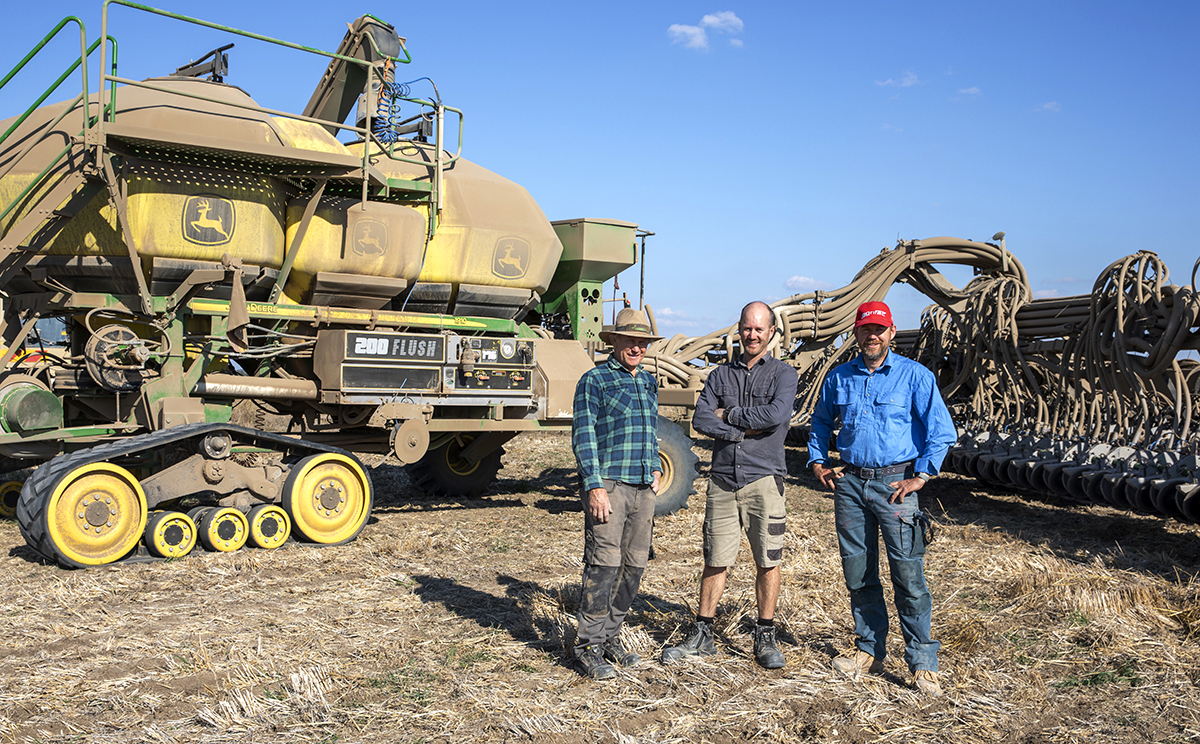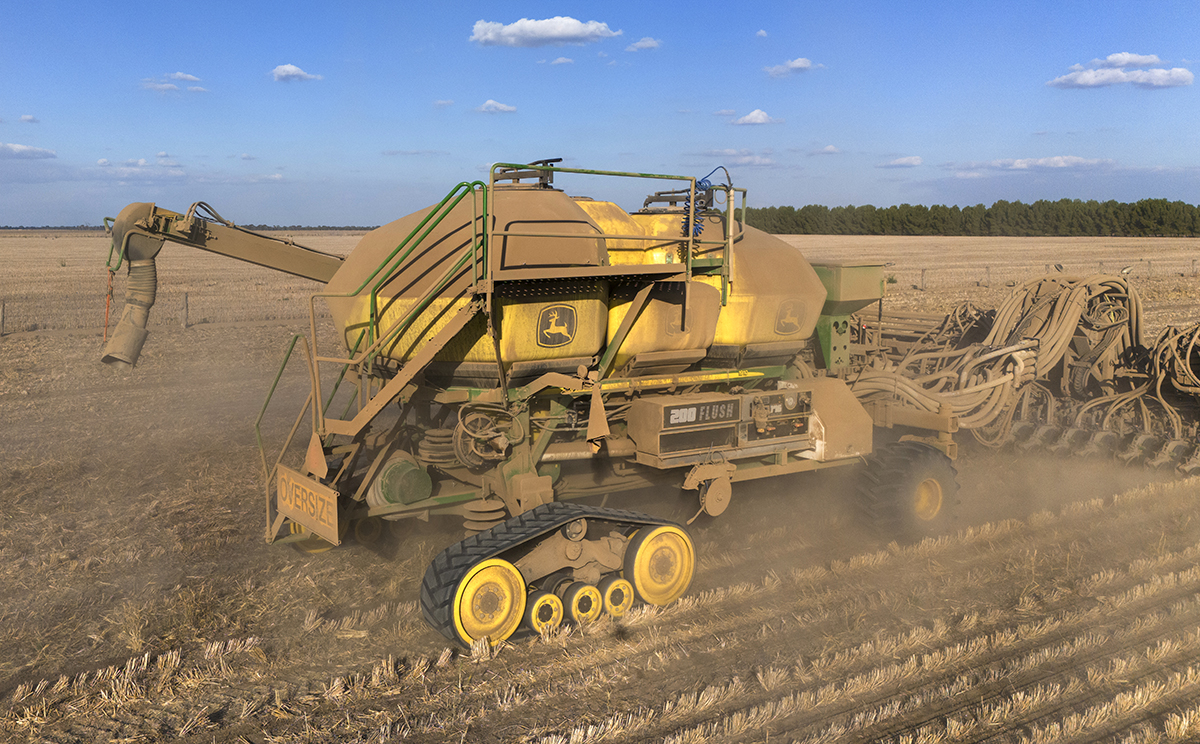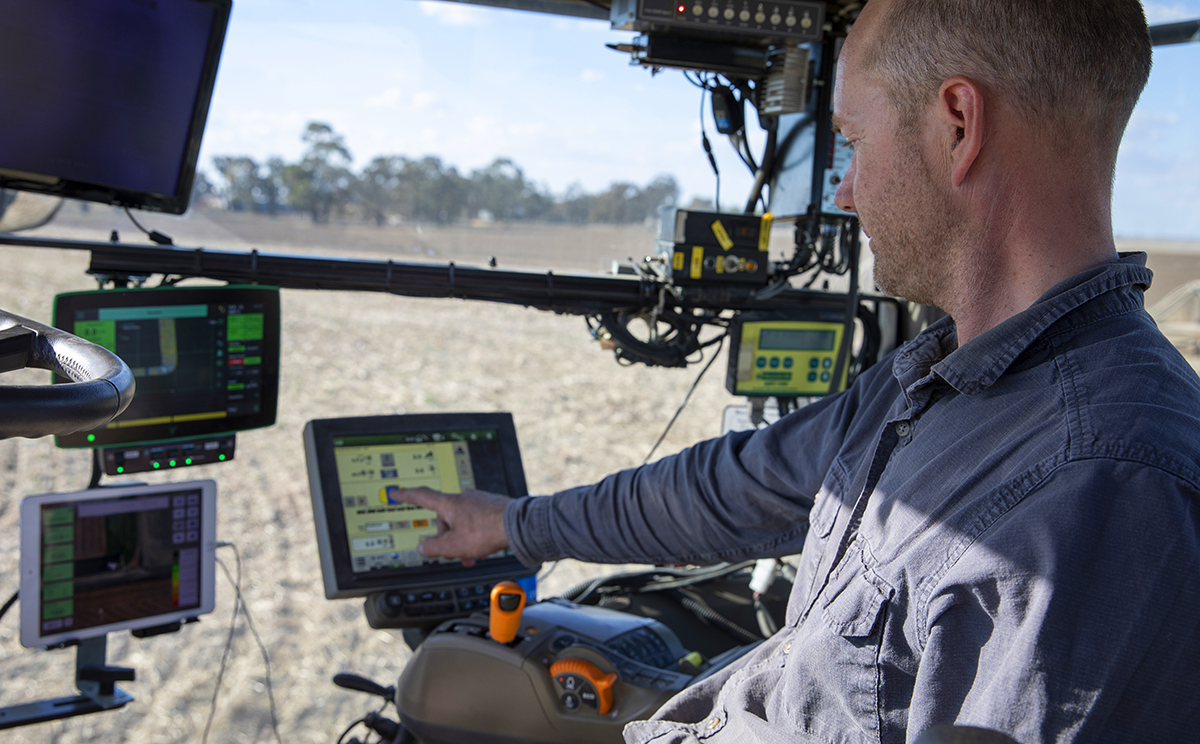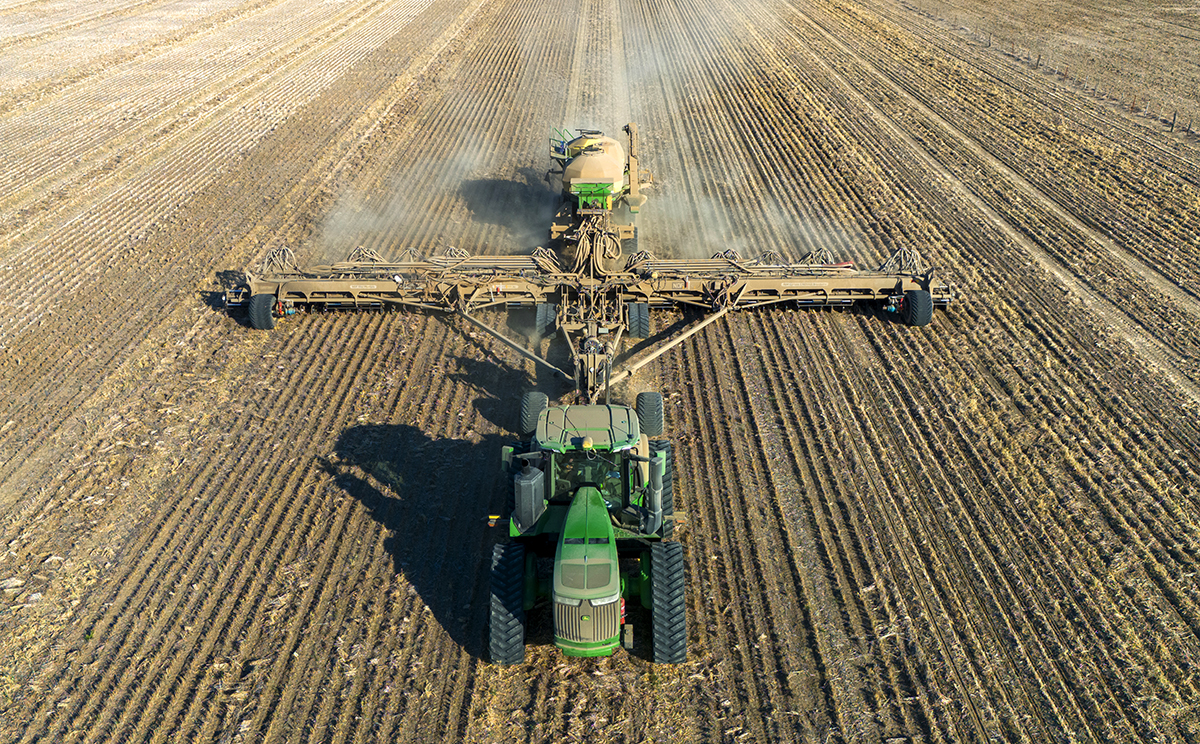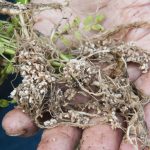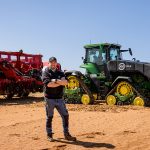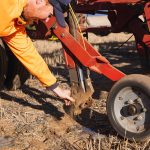Customised nutrients deliver results
Tailoring fertiliser applications to individual crops and paddocks has helped one innovative Victorian cropping family lift efficiencies and build a resilient farming system.
The Rethus family aren’t afraid of change, having transitioned from a generational mixed sheep-crop enterprise to only cropping and then pivoting again to liquid fertilisers in 2014. Inspired by other liquid fertilizer users in their region and their Vic NoTill farming group, they adopted a forward-thinking mindset to experiment with liquid in-furrow applications.
“We believe you need to keep trying new things to improve. If you are not going forward, then you are either static or going backwards,” Luke said.
| ABOUT |
|---|
- WHO: Luke Rethus
- LOCATION: Horsham, Victoria
- INPUTS:UAN, zinc sulphate, liquid phosphorus, copper sulphate, molybdenum, Cruiser insecticide, most fungicidal seed treatments.
- PROPERTY: 5600 ha – Wheat, barley ,canola, lentils, peas, hay oats, milling oats and faba beans
- EQUIPMENT: Liquid Systems (SA) LQS 176JD1910 Liquid Module, with 8 section control manifolds and friction tubes.
| KEY OUTCOMES |
|---|
- More customised nutrient application
- Efficiencies of sowing operation
- Early crop vigour
Luke farms with his father, Geoff, and brother, Tim, near Horsham in Victoria, where they produce winter cereals, canola, and legumes, in addition to producing export hay on 5,600 hectares. Traditionally, the family farm focused on Merino sheep production; however, since 2000, the Rethus family has sold the sheep and focussed wholly on a no-till, controlled traffic cropping system aiming to minimize soil disturbance, reduce compaction and improve soil health.
Around 2014 the family upgraded their air seeder to a John Deere 1910 air cart, which was pre-fitted with a liquid fertiliser kit, including the LQS 176 module. With three tanks, including a 3200 L liquid tank, Luke says they can carry granular fertiliser, liquids and seed. “When we were looking to start using liquids John Deere was the only company that would certify their tanks for using liquids,” Luke said
The sowing rig features a 24-meter twin-disk machine, which consists of an NDF frame equipped with a Harvest International Laser Pro precision row unit, set up on 38 cm row spacings. It is fitted with eight section control manifolds, each containing eight rows, along with a friction tube. The entire sowing rig is towed by a 540 HP John Deere 9RX tractor.
In their first season of using liquids, Luke said that they kept things simple, only focusing on applying UAN for additional Nitrogen to top-up starter fertilisers. Pleased with the results, they identified Zinc as the next nutrient to add into the system.
“We started by thinking every plant needed zinc- so we applied 2L/ha of zinc sulphate across every paddock. We’ve refined things now so liquid rates and mixes are more in line with plant needs based on soil test results. We do more soil testing, particularly on our priority crops like durum wheat and malting barley; they require careful fertiliser management so they meet the grade,” Luke said.
Luke said their agronomist was very supportive of liquids and helped them get started with good advice for the mixes. “We knew we wanted to adopt liquids, but it was all very new back then. We were unsure about what rates to use and what products can be mixed. We learnt a lot of lessons.”
He recommends taking the time to do jar tests to make sure you understand what products can be mixed and in what order. “It’s important to test products from different brands -some manufacturers have different processes and interpretations,” Luke said.
Luke’s fertiliser program is tailored to crop type. Cereals typically receive UAN and zinc sulphate. For pulses zinc, copper and molybdenum are applied. “High dry fertiliser rates in furrow can inhibit canola emergence so liquid phosphorus with zinc is applied with the LQS. In any of the mixes it is critical to maintain at least 20% water to keep the blend in solution, particularly on cold nights,” he said.
Liquid rates used are around 40 -50L/ha
Luke says, with a big sowing program, over half will be sown dry and will not germinate until the opening rains, which can be marginal (5-10mm).
Being able to use liquid mixes in the furrow minimises competition for soil moisture at germination but also ensures even distribution of nutrients. Early vigour and growth are critical to setting maximum yield in dry conditions. In 2024, early vigour allowed seedlings to root down into deep stored moisture early and maintain growth in a dry season. Yields at times more than doubled undernourished or late germinating crops by being able to access the full moisture bucket.
Insecticides and most fungicidial seed treatments are now also applied into the furrow with faba beans and barley the only crops where inoculant or fungicide seed treatment is still applied “It means that at sowing any leftover seed can be easily put back in the silo as clean untreated. It’s more efficient, easier to manage and works well,” Luke said.
It means that at sowing any leftover seed can be easily put back in the silo as clean untreated. It’s more efficient, easier to manage and works well
The Rethus family has made significant innovations in how they handle liquid fertilizers. When installing a 10,000 L liquid tank on the front of their grouper, they added a gantry arm with dry lock fittings. This addition ensures that filling the air seeder is safer and helps prevent chemical spills.
They installed six storage tanks of varying sizes, ranging from 22,000 L up to 30,000 litres for storing products such as UAN and then rely on shuttles for products they use in smaller quantities such as copper sulphate. All the tanks are piped tighter, and a system of electronic valves and meters (which they designed themselves) allows the operator to pump exactly the required amount of liquid fertiliser into the tank on the grouper. Smaller amounts can be added using a hopper. Luke says the system is quite simple to use and has meant that anyone can easily and safely do the task.
Sold on the benefits of liquid fertiliser, Luke believes it’s a better way to manage inputs. Luke said:
Fertiliser is getting more expensive all the time, so you want to use it efficiently. By using liquids in conjunction with soil testing we can be more targeted with our fertilisers. We can customise products and rates per variety for crop type and paddock rather than using a blanket approach. It means we can include other nutrients specific to those crops, like copper or zinc into the liquid to achieve improved yields or better-quality grain. Small gains can make the difference to profitability.
He says logistically it’s a lot better to manage the variants in liquid form. “You only need a few IBC’s- as you’re not adding a lot and its better than having silos filled with tonnes of different fertiliser blends. “
Luke says it can be daunting for growers looking to get started with Liquids, but he suggests starting slowly. “Maybe it’s just getting a few shuttles and using them to top up starter fertilisers. But you need to understand what the benefit of doing that will be. Once you have that step sorted, then the following season, you can add a little bit extra and build on things as you get more experience and more understanding. Work with your agronomist, and if they aren’t comfortable with using liquids, then find another farmer who is using them and ask questions,’ he said.
I think the good thing about Liquid Systems is that you can turn the system on, and it just works. We haven’t had any trouble, but there are good diagnostics built in if you run into problems. We’ve had good success and been well supported by the team.
Luke is happy to recommend Liquid Systems to other growers. “I think the good thing about Liquid Systems is that you can turn the system on, and it just works. We haven’t had any trouble, but there are good diagnostics built in if you run into problems. We’ve had good success and been well supported by the team. If we need parts then we can get them quickly and the staff are more than happy to help,” Luke said.
Get a Quote
"*" indicates required fields

